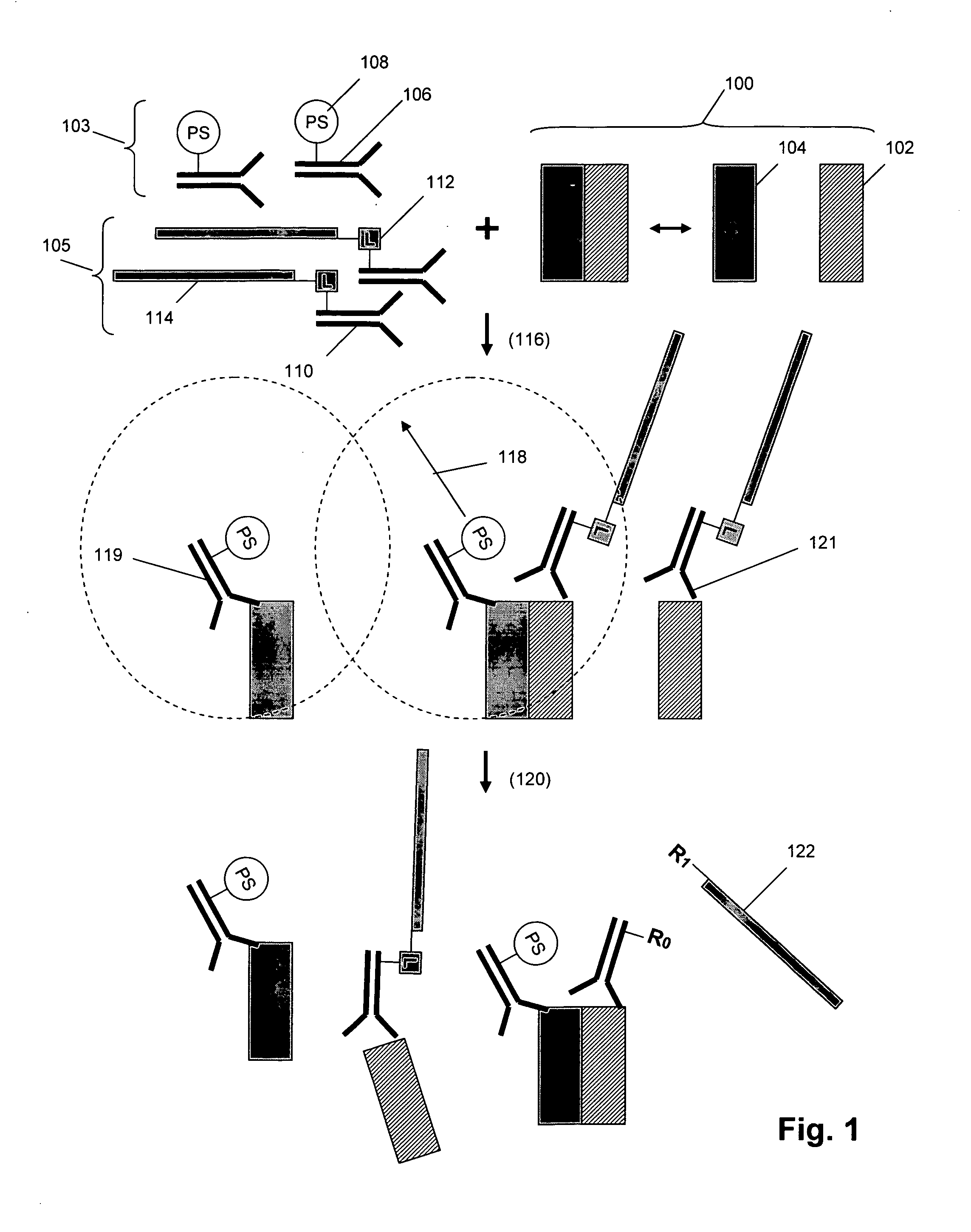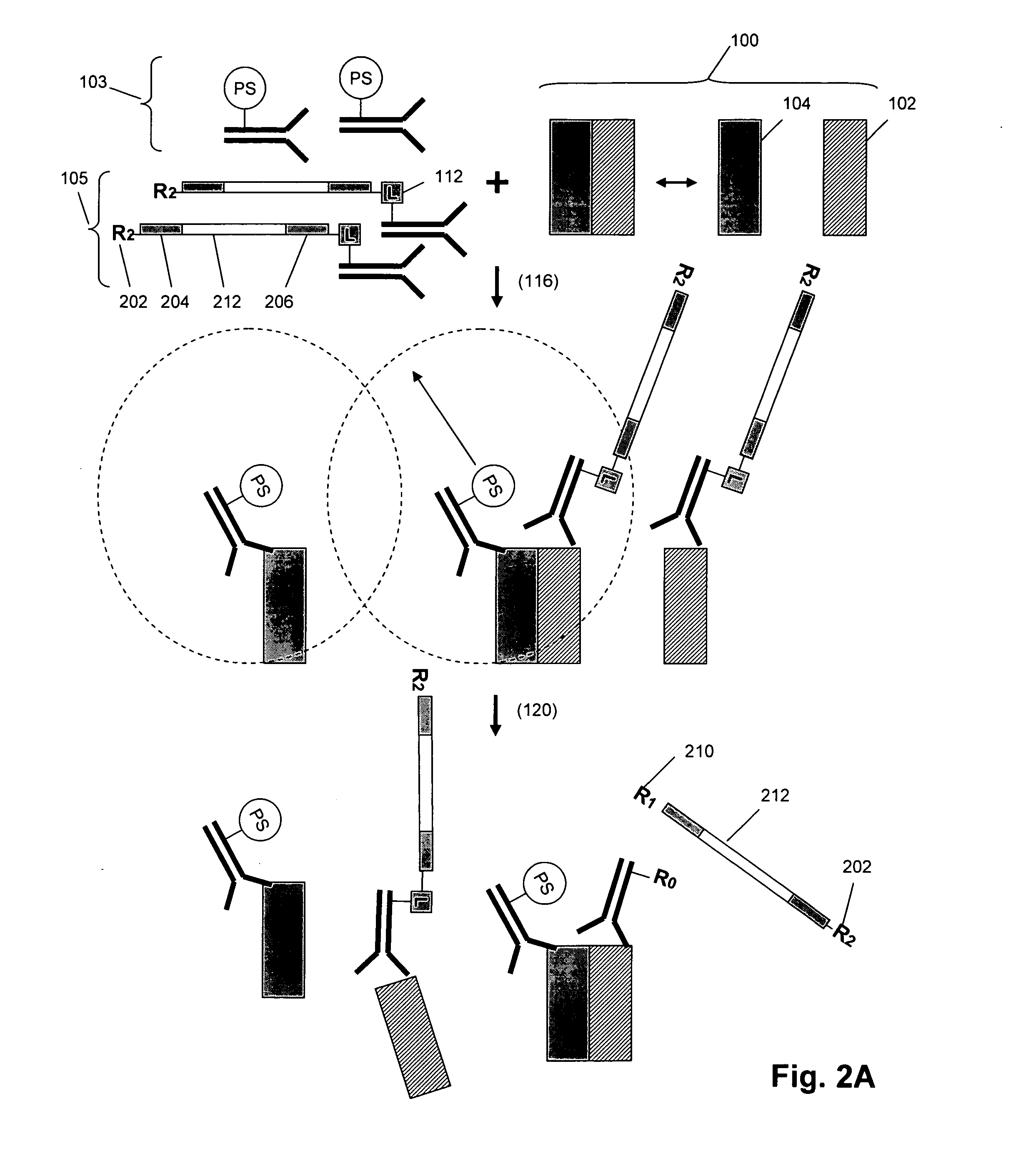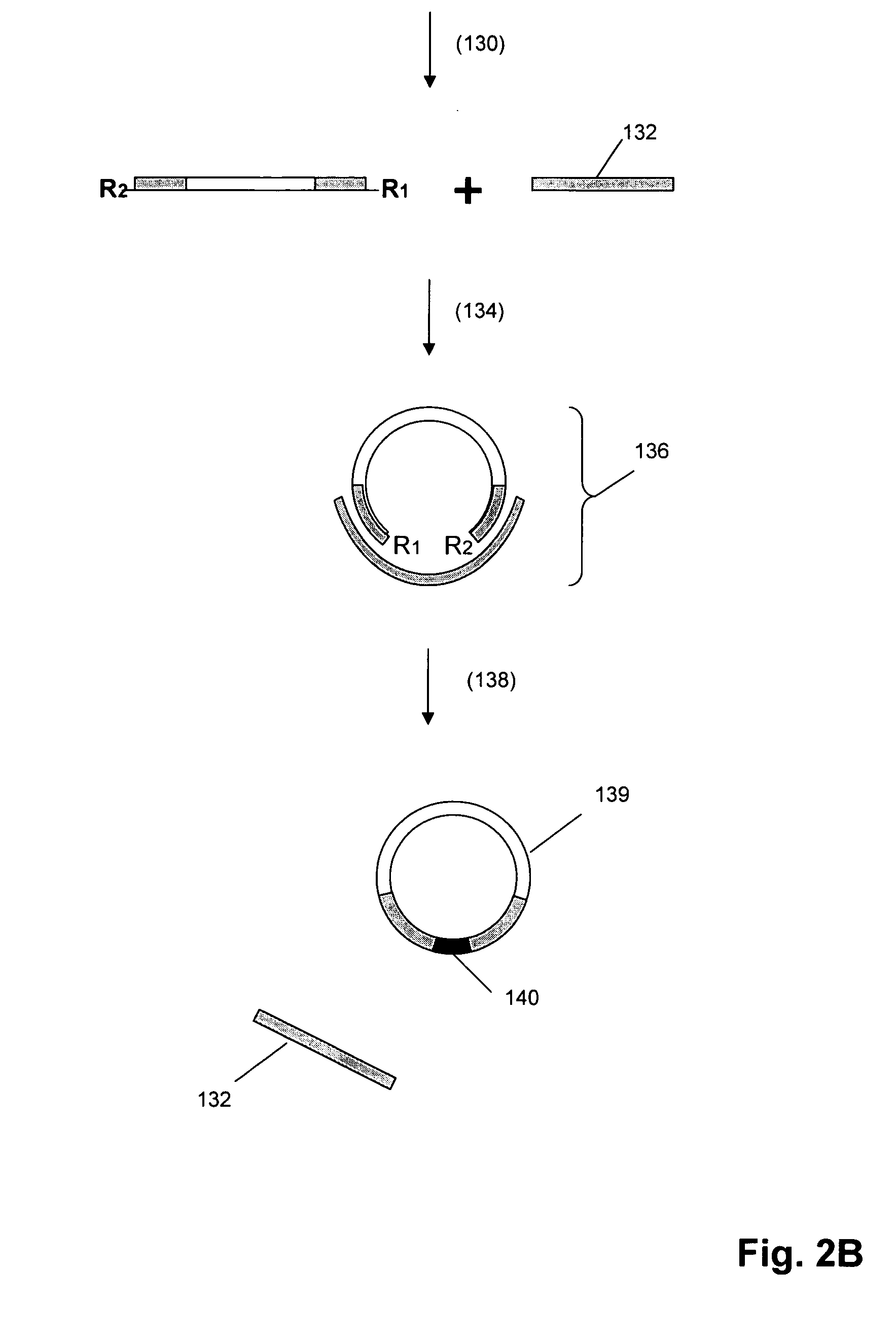Detecting molecular complexes
a molecular complex and complex detection technology, applied in the field of biomolecule complex detection, can solve the problems of lack of sensitivity to provide an accurate picture, difficulty in evaluating the utility of such approaches for detecting molecular complexes, and often difficult application of techniques
- Summary
- Abstract
- Description
- Claims
- Application Information
AI Technical Summary
Benefits of technology
Problems solved by technology
Method used
Image
Examples
Embodiment Construction
[0071] The invention provides methods and compositions for detecting or measuring molecular complexes. Generally, the invention employs pairs of compounds, also referred to as “reagent pairs,” comprising (i) one or more binding compounds each cleavably linked to a different, and usually unique, signaling polynucleotide (referred to herein as “signaling reagents”), and (ii) one or more binding compounds each having attached one or more cleaving agents (collectively referred to as a “cleaving probe”). Binding compounds of the invention are usually antibody binding compounds, and especially, monoclonal antibodies. The assays of the invention may be conducted under the same or similar conditions as the immunoassays disclosed in the following references that are incorporated by reference for the teachings of assay conditions: U.S. patent publication 2004 / 0126818, and PCT publications WO 2004 / 091384, WO 2004 / 087887, and WO 2005 / 019470.
[0072] In one aspect, operation of the method of the ...
PUM
| Property | Measurement | Unit |
|---|---|---|
| molecular weight | aaaaa | aaaaa |
| temperature | aaaaa | aaaaa |
| temperature | aaaaa | aaaaa |
Abstract
Description
Claims
Application Information
 Login to View More
Login to View More - R&D
- Intellectual Property
- Life Sciences
- Materials
- Tech Scout
- Unparalleled Data Quality
- Higher Quality Content
- 60% Fewer Hallucinations
Browse by: Latest US Patents, China's latest patents, Technical Efficacy Thesaurus, Application Domain, Technology Topic, Popular Technical Reports.
© 2025 PatSnap. All rights reserved.Legal|Privacy policy|Modern Slavery Act Transparency Statement|Sitemap|About US| Contact US: help@patsnap.com



